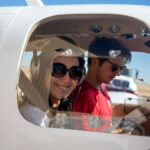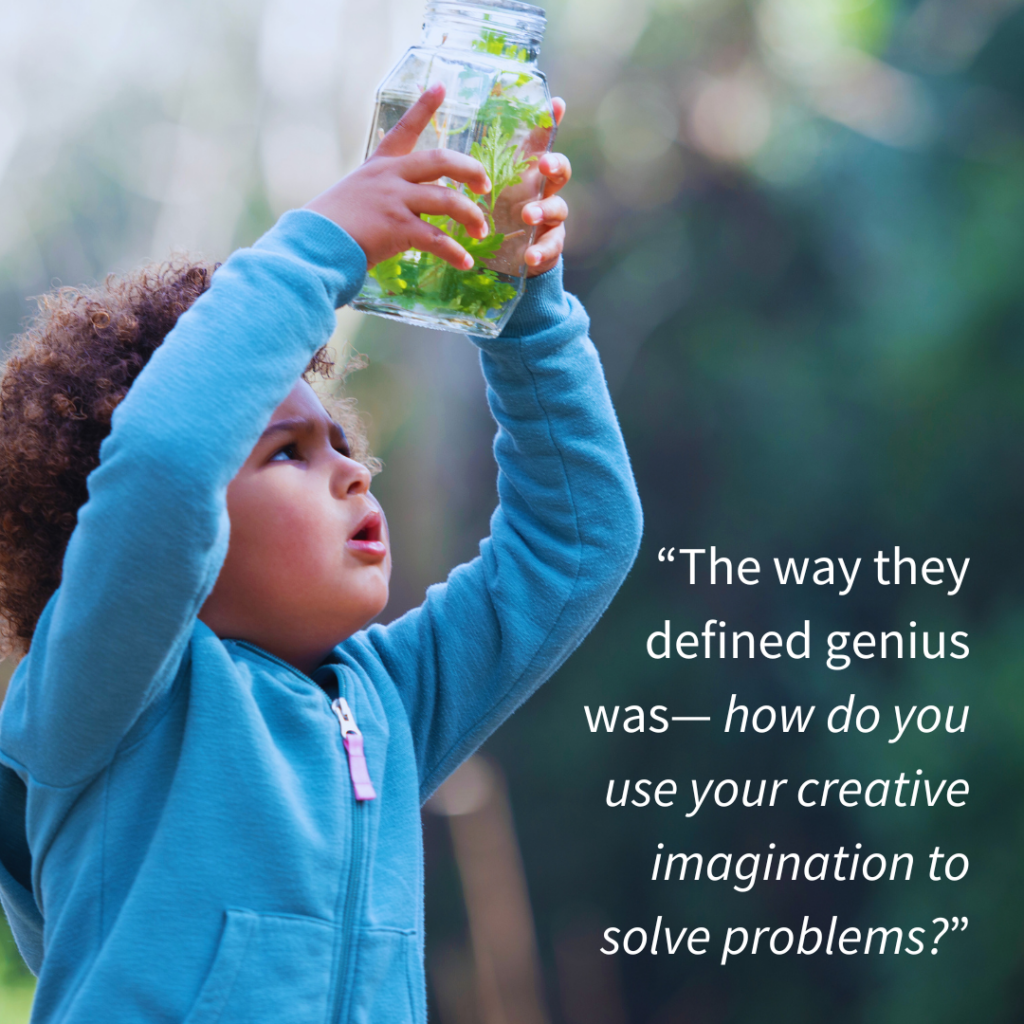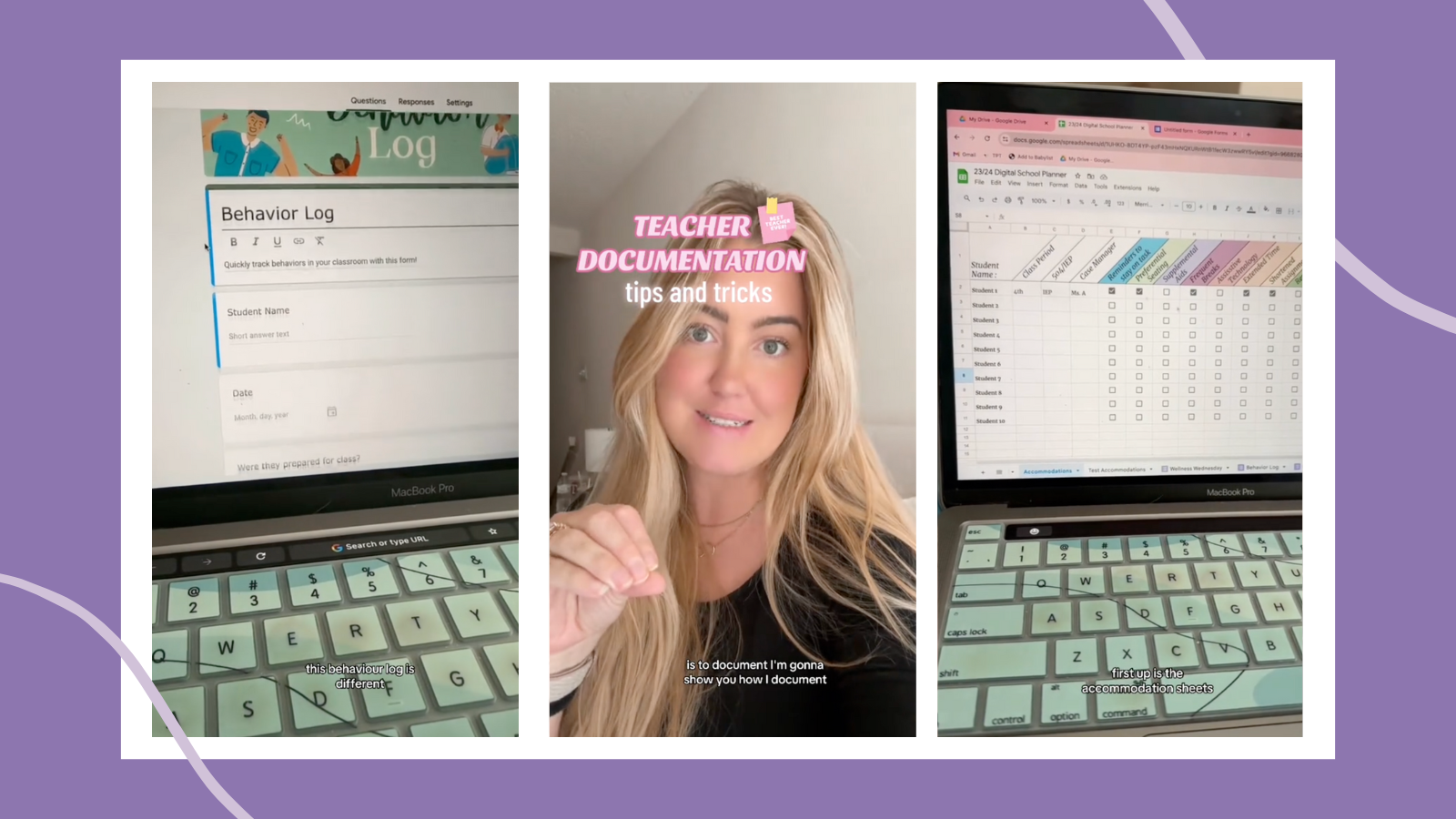America’s education system was a groundbreaking effort to help a growing nation thrive in the 19th century. Now, 200 years later, the world has changed; the horizon looks drastically different. Collectively, we need to redesign our education system to enable all of our children — and, by extension, our nation — to thrive today and tomorrow. “Horizon Three” or “H3” names the future-ready system we need, one that is grounded in equity serving learners’ individual strengths and needs as well as the common good. This series provides a glimpse of where H3 is already being designed and built. It also includes provocations about how we might fundamentally reimagine learning for the future ahead. You can learn more about the horizons framing here.
By: Antonia Rudenstine
A few days ago I came across an Instagram reel that reminded me of what the potential of learning can be, and what happens when the learning models we design miss the mark. The reel describes a study that George Land undertook on behalf of NASA, attempting to understand how to identify genius. The punchline: At five years old, 98% of young people met NASA’s definition of genius. They tested this same group every five years, with shocking decreases in the %. When tested as adults, only 2% were able to use creative imagination to solve problems.
Check out the reel–less than 2 minutes–of young geniuses at work. Or George Land’s TEDxTalk-13 mins.
If you’ve ever spent time with a 5-year-old, you’ll remember how magical their brains are: How they brim with questions: Why is the sky blue? Where do people go when they die? Why is my friend sad? Is today tomorrow? Who made the world? (thanks to ChatGPT for this list).
You find them wandering around playgrounds picking up rocks and sticks and buttons and glass to incorporate into their play. They tell stories and create drawings, sculptures, and paintings. They design games with complex scenarios and rules and experiment with objects in order to figure out how things work.
In short, they are budding scientists, designers, philosophers, artists, and social scientists, engaged in refining future-ready skills. Their approach is transdisciplinary: their games and questions and design solutions are not limited to the knowledge and skills of science or math or ELA: they are building schemas that make connections that traverse the walls of our disciplines. They make meaning by following their interests and curiosity, not abiding by the rules of circumscribed content.
So what happens between age 5 and adulthood? Land’s theory: the more time young people spend in school–with increasingly limited opportunities to explore, tinker, iterate, and experiment–the less able they are to engage in the intertwined skills of creativity and problem-solving: the less opportunity they have to develop their genius.
I ultimately left the classroom to explore three related questions, that have continued to animate my professional life for thirty years:
What should young people get really good at?
What should young people do all day: what’s worth the commitment we ask them–and their families–to make: 180 days a year for 13 or 14 years?
How can we design learning communities that place these questions at the heart of the work, and continue to iterate on the model in response to our rapidly changing world?
For me, the answer is to embrace this current moment to rethink the enterprise. The current VUCA (volatile, uncertain, complex, and abstract) moment has created a unique opportunity to reimagine what’s possible. For example, with the mainstream hyper-adoption of of AI, we no longer know what procedural knowledge (facts, information, formulas, processes, etc) young people actually need to learn:
Do they still need to memorize the formula for the Pythagorean Theorem, the steps for the scientific method, or what onomatopoeia means?
Or do they just need to know what these are, and be able to ask ChatGPT–or other tools we can’t yet imagine–to create an experiment, write a poem, or design an architectural model?
Or, even more likely, can they just ask ChatGPT to create a poem on a particular topic, and ChatGPT will decide if onomatopoeia is a good structure?
I do not ask these questions lightly: we truly do not know what schema-building will look like from this point forward. (As a side note, it would be very helpful to have research entities launch longitudinal, interdisciplinary studies to help us understand how young people develop schemas when they use AI tools to undertake projects, and to identify the schema being developed.)
What we do know is that knowledge, skills, and learning are at an inflection point that is so profound it is difficult to fully grasp:
Each day, 402.74 million terabytes of data are created.
New interdisciplinary areas of research and practice are established each year, while the study of several foundational disciplines is decreasing at rapid rates, due to lack of interest.
New careers are rapidly emerging, and many others will disappear in the coming decade: OECD predicts that 28% of current jobs are at the highest risk for automation due to AI and new tech (AI & Work, 2023). The World Economic Forum estimates that 23% of jobs are expected to change by 2027 (just 3 years from now), with 69 million new jobs created and 83 million eliminated (Future of Jobs, 2023).
While this can be overwhelming and unsettling, it’s also an exciting opportunity to create school models that keep the vision of 5-year-old geniuses at the heart of the enterprise. Learning experiences in these learner-centered communities could have four foci:
Deep understanding of Key Concepts–as a replacement for prescribed content limited to the four core content areas
Mastery of Core Thinking Processes–as a replacement for the rote learning of procedures
Development of Future Ready Competencies–as a replacement for age-based, discipline-based skills
Engagement with Relevant and Meaningful Projects, Designs, and Products–as a replacement for activities, worksheets, tasks, and assessments that develop and measure lower-order thinking skills
Key Concepts
While I am a strong advocate for unlocking ourselves from the bindings of the 4 core content areas that the Committee of 10 enshrined in 1894, and the standards movement further instantiated with No Child Left Behind, I am an equally strong proponent of the deep study of ideas and knowledge.
What I am excited about is the possibilities of a “third way:” Could we identify a far more limited set of interconnected key concepts and knowledge that we believe all young people should learn–some disciplinary and some inter- and trans-disciplinary? For example, a set of Life Science Concept Clusters:
And then, map a very broad set that young people COULD explore, using their agency to make decisions about the path to follow: some community-specific, some grounded in the lived experiences, culture, and history of many peoples, some grounded in new information and ideas, and some grounded in work and community needs of the future.
For example, Kara Bobroff so eloquently describes the ways NACA honors Indigenous ways of knowing could be honored, cultivated, and instantiated, as they are in the NACA-inspired schools network, while other communities and peoples might center different experiences. This both/and approach provides communities and families with many choices, acknowledging the truly fluid state of information and ideas. Simultaneously, it establishes a set of vetted concepts, without a top-down set of requirements. The difference: the vetted concepts tap into knowledge and ways of knowing far beyond the 4 core content areas.
Core Thinking Processes
These are the “key processes that can help young people create value in the real world” as they work with key concepts: processes such as the Scientific Method, Design Thinking, and the Creative Process. Sujata Bhatt built The Incubator School around core processes specific to Entrepreneurship. At Lemelson/MIT they apply a core process specific to Invention Education, guiding high school InvenTeams to develop patentable solutions to real-world problems.
Core processes are a powerful tool for learning and creation. Young people who understand their architecture can use them–over and over again, with different concepts and content, and across different contexts–as they design, create, and produce a wide array of projects. Using these processes repeatedly supports their development of self-efficacy and agency.
Future Ready Competencies
It used to be that one could find predictions for the future of work stretching out 10 or even 20 years. Since the release of large language models, such as ChatGPT and Claude, the timelines for these predictions have shrunk to 3-5 years. For example, in 2023, the World Economic Forum limited itself to naming the 10 most important skills for THAT year:
(https://www.weforum.org/publications/the-future-of-jobs-report-2023/in-full/)
While America Succeeds’ Durable Skills Framework describes a similar set of skills prioritized by CURRENT employers. These are essential contributions, helping us understand the current and near-future demands of the workplace. However, futurist Nikolas Badminton reminds us: “It’s not which jobs will be automated, but when they will be automated: every part of the economy will be affected…[but] while there will be a shift towards automation, I think we’ll be a world of the human and machine working together in symbiosis…We will be freed from repetitive work to do more creative things together. I call this new world the ‘wisdom economy’.”
So, at this precipice, it is critical to ask: What should young people get really good at? Which competencies are the “right” ones for a wisdom economy, a creative economy, or an economy that requires strategic, analytical thinking?
There are an increasing number of competency frameworks to choose from, and while I’m partial to reDesign’s Future9–which starts with UNESCO’s four premises for lifelong and life-wide education: “learning how to learn, learning how to do, learning how to live, and learning how to be”–I am also a believer in the power of communities to define what’s important.
As communities undergo the work of articulating core competencies, it may be helpful to pressure-test new frameworks, using a few questions:
Are our competencies:
Aligned with the Science of Learning and Development (SoLD): i.e. can young people or adults actually LEARN these? Many frameworks identify values and beliefs that aren’t so easy to explicitly teach or learn, which can set up young people for failure.
Enabling young people to develop a deep understanding of their community’s culture, history, and lived experiences?
Ensuring young people can create thriving lives for themselves in 2040 and beyond–as community and family members, and as individuals who live, learn, and work in the future world?
Observable (and therefore measurable) in classrooms, communities, and the workplace?
Designed with developmentally appropriate learning progressions grounded in the research about how each competency is actually learned, across a finite number of stages?
Supporting the deep study of key concepts, knowledge, and skills; alongside the application of essential core processes that will matter in 2040 and beyond?
Competency design is complex, technical work. Large language models can help us create these better and faster, particularly if your starting point is an existing framework that was designed to attend to each of these questions. AND, as we design, we must all hold these frarmeworks lightly, adapting them in response to the rapidly changing world.
Relevant, Meaningful Projects, Designs, Products, Artifacts, And More
We know that student engagement leads to increased motivation, which can then prompt the development of agency and a sense of self-efficacy. We also know that students’ engagement in K-12 education has been an issue for a long time. In pre-pandemic 2018, 53% of high school students reported high levels of disengagement on a Gallup Survey.
In 2024, the Walton Family Foundation-Gallup Survey reported that less than half of students say their schoolwork positively challenges them (49%), or aligns with what they do best (46%).
Drilling down into the 2024 survey results, students report more engagement when the topic is something:
they want to learn more about
presented in an interesting way
learned in a hands-on way
useful in the real world; everyday life; a current or future job
that uses technology to support learning
challenging
In short, they want their learning to mirror the learning of five-year-old geniuses. Perhaps this list can become the starting point for the co-design of learning experiences with young people, where:
A broad array of key concepts can be explored in depth
Future-ready competencies can be developed through practice and demonstration
Core thinking processes can be employed by young people as they create truly meaningful projects, products, designs, and artifacts that speak to the cares, concerns, interests, and passions of young people while addressing the issues, challenges, and problems of the current world.
If we take this on as part of the design of a new learning ecosystem, we will need new models to bring it into being. As Tom Vander Ark explains in the blog post that launched this series on Horizon 3 Learning (think of the Far Horizon, which has become the Near Horizon): “New schools can bundle new goals, new strategies, and new tools into coherent models. While they expand access to next-gen learning, they illustrate the way forward for transformation” (Why we Need More Schools).
And, if we are going to reimagine the learning enterprise, we must commit to designing new learning communities for the adults who will launch them: preservice programs, apprenticeships, leadership development, and ongoing capacity building for educators and community members engaged in the work, organized around a future-facing vision of competencies …but these are topics of future blogs.
Antonia Rudenstine, Ed.D. is the Founder and Executive Director of reDesign.
This blog series is sponsored by LearnerStudio, a non-profit organization accelerating progress towards a future of learning where young people are inspired and prepared to thrive in the Age of AI – as individuals, in careers, in their communities and our democracy.
The post What Should Young People Get Really Good At? appeared first on Getting Smart.
Young people should master creativity, problem-solving, and future-ready skills by reimagining education and embracing a transdisciplinary approach.
The post What Should Young People Get Really Good At? appeared first on Getting Smart. Competency-Based Education, Learning Design, New Pathways, Project-Based Learning, creativity, H3, new learning models, student engagement Getting Smart








